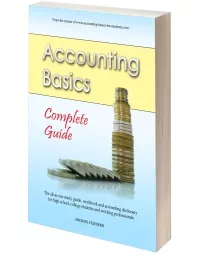What is Profit and Loss?
Previous lesson: Drawings Example
Next lesson: Income: Definition and Examples
What is profit and loss? And why is this important? In this short lesson we're going to go over this key accounting concept and learn how it fits into the basic accounting equation.
Check your understanding of this lesson by taking the quiz in the Test Yourself! section further below. And right at the bottom of the page, you can find more questions on the topic submitted by fellow students.
Defining Profit and Loss
Profit is the positive amount you are left with when your total income exceeds your total expenses.
In order to calculate profit, we take our income and deduct our expenses.
Profit indicates that a business is producing and selling valuable products and services at prices that are greater than what it costs them to do so.
In certain situations, expenses can be greater than income. In this case, the business makes a loss.
A loss is the exact opposite of profit.
A loss is simply the negative amount one is left with when expenses exceed income.
Profits and losses are always calculated and shown over a certain period of time. For example, three months, or one year.
Why is Profit Important?
A person starts a business, and invests his assets in the business, so that the business will produce a profit for him.
This reason or motivation of starting and running an organization with the objective of making a profit is called the profit motive.
Other organizations, such as welfare and educational organizations, are non-profit organizations – i.e. they do not exist for the main reason that the owner makes a profit, but for other reasons such as benefiting the community or a group of people. So when we are looking at income, expenses and profit, we are really only looking at your for-profit business.
The amount of profit that a business makes indicates how well a business is performing. This is known as the financial performance of a business.
The profit and financial performance of a business is arguably the most important indicator of how the business is doing for anyone concerned with the business - managers, investors, and anyone else.
The profit and financial performance of a business is shown in a report called the income statement, also known as the profit and loss statement. The income statement is one component of the financial statements, which are the key financial reports of a business.
Profit and the Accounting Equation
If the business makes a profit, this will always belong to the owner (or owners).
Remember, the owner and his share of the business is represented by owner's equity.
So when a business makes a profit, this always means more owner’s equity (the owner’s share).
In the same way, if a business makes a loss, this means less owner's equity.
We'll go over detailed examples of how profits and losses impact the owner's equity in our next few lessons.
Test Yourself!
Before you start, I would recommend to time yourself to make sure that you not only get the questions right but are completing them at the right speed.
Difficulty Rating:
Beginner
Quiz length:
2 questions
Time limit:
4 minutes
Important: The solution sheet on the following page only shows the solutions and not whether you got each of the questions right or wrong. So before you start, get yourself a piece of paper and a pen to write down your answers. Once you're done with the quiz and writing down your answers, click the Check Your Answers button at the bottom and you'll be taken to our page of solutions.
Good luck!
Okay, so that's it for our short lesson! I hope you can now easily answer the question: What is profit and loss?
Now, when we said that profit equals income minus expenses, we didn't really go over what income and expenses are. Well, we'll do so in detail in the next few lessons, starting with the next lesson where we'll define income and go over a number of examples.
Return from What is Profit? to Basic Accounting Transactions
Return to the Home Page
Stay up to date with ABfS!
Follow us on Facebook:
Previous lesson: Drawings Example
Next lesson: Income: Definition and Examples
© Copyright 2009-2023 Michael Celender. All Rights Reserved.
Click here for Privacy Policy.








Comments
Have your say about what you just read! Leave me a comment in the box below.